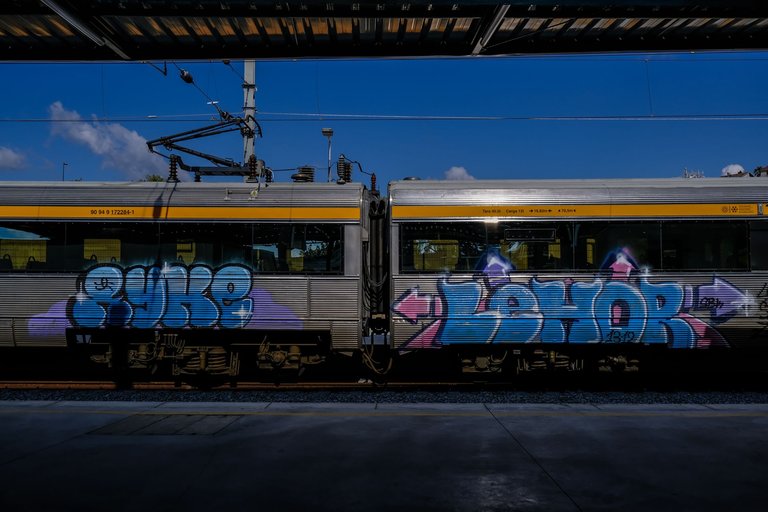
This publication is more about reflection than competition.
Street art is usually static. On a wall or other support, it is seen by everyone who passes by and observes it.
Graffiti on train carriages takes on a different dimension and visibility. They become mobile, on the move they seek out other eyes.
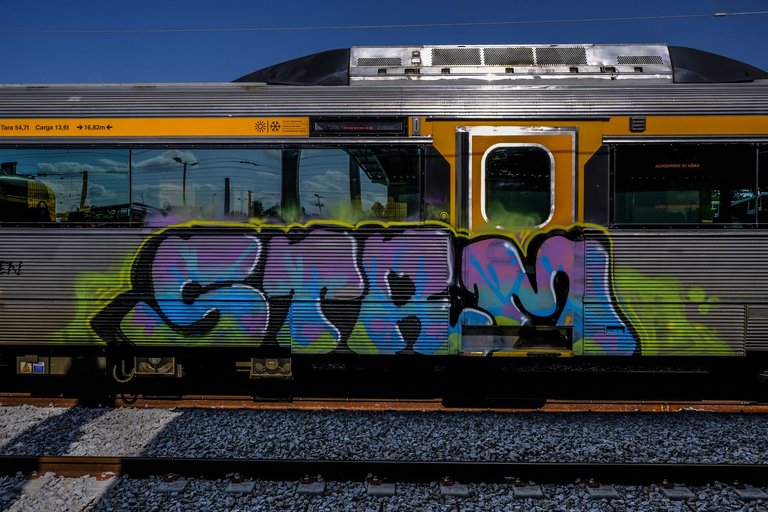

In Portugal there is an increasing number of this type of intervention, which is leaving the state in despair. According to CP (the public company that oversees trains in Portugal), they spend around half a million euros a year erasing graffiti from carriages.

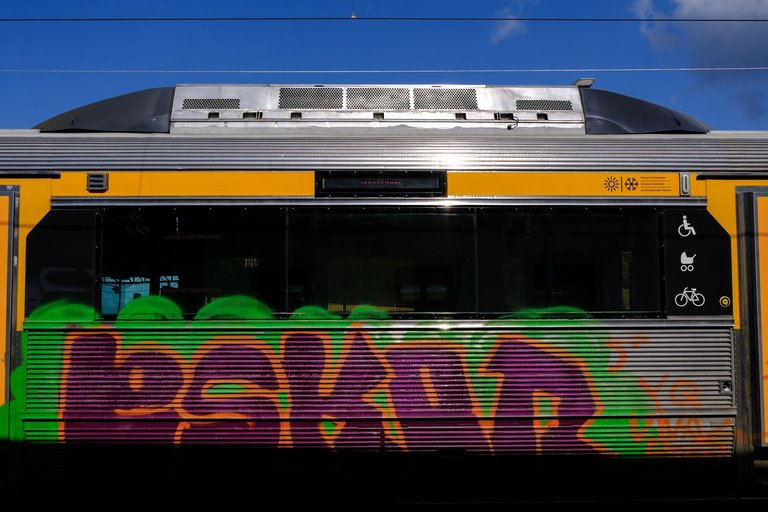

Graffiti fonts are almost always the most commonly used, perhaps because they are quicker to erase. These were captured at Coimbra B station.
The impact of this graffiti is not only aesthetic, it also harms users and train drivers. This is the downside: when the driver's cab glass is graffitied, the driver is unable to see out. If the whole window is covered, people don't know where they are.
Apart from this negative side, I'd like to know what you think in the comments. For you, is it street art or vandalism?
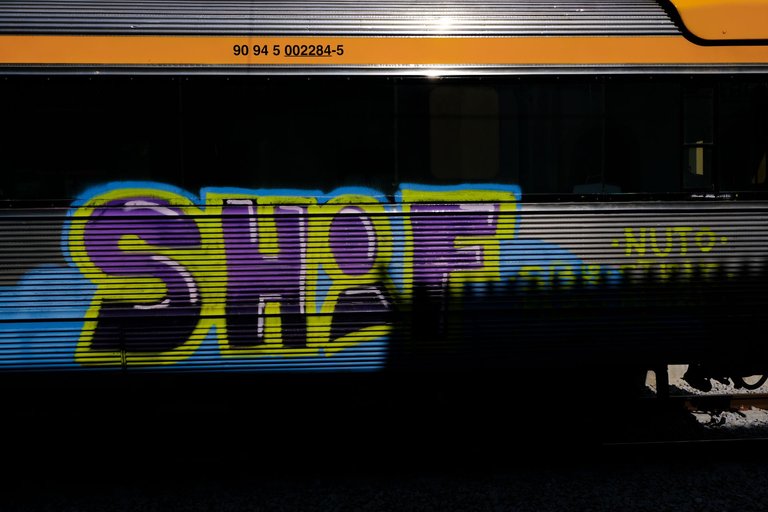


ORIGIN
The habit of painting trains originated in New York in the 1970s.
The aim was to gain visibility and prestige among the writers' peers. To make a name for yourself, you had to paint a lot, well and quickly. The adrenaline rush of painting in subway or train carriages, combined with the danger of being caught, distinguished and valued the writers among themselves.
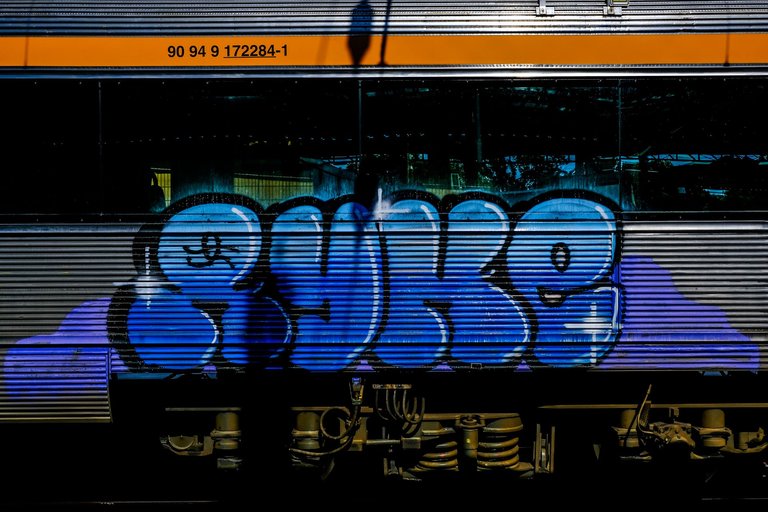

✍️ My native language is Portuguese. The translation was done through DeepL.com (free version).
! [PORTUGUESE VERSION]
Arte de rua ou vandalismo?
CCC's Street Art Contest #248
ᅠ
Esta publicação é mais objeto de reflexão do que competição.
ᅠ
Por norma a arte de rua é estática. Numa parede ou noutro suporte ela é vista por todos os que passam e a observam.
Graffitis em carruagens de comboio ganham outra dimensão e visibilidade. Tornam-se móveis, em andamento procuram outros olhares.
ᅠ
Em Portugal está a haver cada vez mais este tipo de intervenção, o que está a deixar o estado em desespero. Pois, segundo a CP (empresa pública que tutela os comboios em Portugal), gastam cerca de meio milhão de euros anualmente a apagarem os graffitis das carruagens.
ᅠ
Quase sempre o género Graffiti Fonts é o mais utilizado, talvez por ser mais rápida a sua execução. Estes foram captados na estação Coimbra B.
ᅠ
O impacto destes graffitis não é só estético, também prejudica utentes e maquinistas. Este é o lado negativo: quando é grafitado o vidro da cabine de condução, o maquinista fica sem condições de visibilidade. Se a intervenção ocupar a totalidade da janela, as pessoas não sabem onde estão.
ᅠ
Tirando este lado negativo, gostava de saber a sua opinião nos comentários. Para si, é street art ou vandalismo?
ORIGEM
O hábito de pintar comboios vem da década de 1970 com origem em Nova York.
ᅠ
O propósito era ganhar visibilidade e prestígio entre os pares de writers. Para se conseguir reputação era necessário pintar muito, bem e depressa. A adrenalina de pintar em carruagens de metro ou do comboio, associado ao perigo de ser capturado, distinguia e valorizava os writers entre si.


